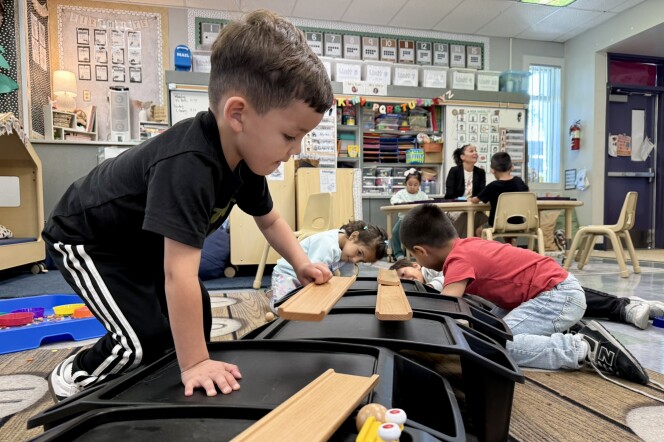With our free press under threat and federal funding for public media gone, your support matters more than ever. Help keep the LAist newsroom strong, become a monthly member or increase your support today.
One Way to Address LA's Racial Inequality? Build More Parks in Communities of Color

Los Angeles has one of the largest urban parks in the country, but the city has routinely been on the bottom in rankings that track municipalities' percentage of land devoted to green spaces.
And the parts of L.A. most in need of parks are concentrated in neighborhoods that are primarily home to people of color, like South L.A. and Van Nuys.
Naomi Humphrey grew up in Historic South Central. For a study she conducted with the National Health Foundation, Humphrey found her neighborhood had far less park space per capita compared to a place like Santa Monica.
"Most people don't have a quality park within a 10-minute walk from them," she told KPCC's Take Two.

Even Ross Snyder, which Humphrey considers her neighborhood's best park, fell short on basic amenities that make a park feel welcoming.
"There's no access to water fountains because all of the water fountains are broken or damaged," she said, "or there's broken playground equipment like swing sets. Basic things that people take for granted in their parks, they're just not in the parks in my area."
Good parks have become especially important during the quarantine, when locals are looking for places nearby to feel and stay healthy.
"If you're sick, being able to step outside and breathe fresh air really helps," said Sofia Girón, a South L.A. resident, in Spanish (Girón spoke to LAist through a translator). Girón also wants more places for active recreation.
"There aren't enough basketball courts for the needs of the community," she said. "People are waiting a long time to get their turn, or there are some people who are more rude and take over."
Usually, Girón and her family drive to Griffith Park to get outside.
"There are just more things at other parks: more amenities, more games, more fields for us to take part in," she said.
That map of L.A., where communities of color have few nearby parks, is partly by design and evidence of the systemic racism in the city's history.
Los Angeles created the nation's first zoning code, and one of the earliest uses was a 1904 rule situating industrial sites - as well as dense residential and commercial districts - far from the affluent and mostly white Westside. Instead, they were placed in the south and east parts of the city, close to established communities of color.
With most of the land taken up by sprawling, polluting factories and housing developments, little space was left for parks. The majority of the city's parks budget, then, was spent closer to the Westside.
It was only two decades ago that Los Angeles began ramping up efforts to rectify that inequality by spending more on parks in underserved areas.
But the lack of parks in a place like South L.A. is still enough of a problem that some locals have worked on programs like Equipo Verde with the Trust for Public Lands, where unsightly alleyways are reclaimed for use as green spaces.
One example runs right behind a Food 4 Less in South Park.

"It's what we call the Food 4 Less alley," said local Ana Gomez in Spanish (Gomez spoke to LAist through a translator). "In comparison to how it was, which was sofas and trash everywhere, we now see a lot more people walking and using their bikes."
It may not compare to the parks she's seen elsewhere in the city, she added, but she and her neighbors wanted to take it upon themselves to create something that wasn't being provided.
"The community has been waiting for this change for a long time, and now that it's come, there's a responsibility towards stewardship of the park space," she said.
But as L.A. officials wrangle over how to reprioritize the city's budget, locals say it's even more important to preserve parks spending and to see it as a health issue.
"Considering all the things that we know about COVID-19 and how Black and Brown communities have been impacted by something like a virus, it just shows how much we need to be looking into the health and well-being of people," said Humphrey.







